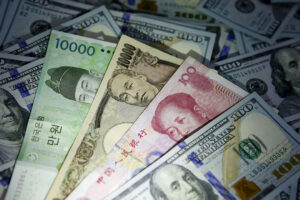More “hot money” entered the Philippines in January, central bank data showed. — REUTERS
By Keisha B. Ta-asan, Reporter
MORE FOREIGN CAPITAL entered than left the Philippines in January to yield a net inflow for a third straight month in January, data from the Bangko Sentral ng Pilipinas (BSP) on Thursday showed.
Transactions on foreign portfolio investments registered with the central bank through authorized agent banks posted a net inflow of $292.12 million in January, more than triple the $92.95 million in December 2022.
The January tally was also about 20 times larger than the $14.6-million net inflow in the same month last year, the BSP said.
Foreign portfolio investments are commonly referred to as “hot money” due to the ease by which these flows enter or leave the country.
According to BSP data, January saw $1.004 billion in gross inflows, a 7.9% drop from $1.09 billion in December. Year on year, gross inflows rose by 37.3% from the $731.42 million seen in January 2022.
The bulk of investments (62.8%) went into Philippine Stock Exchange (PSE)-listed securities, mainly banks and holding firms, as well as companies involved in property, food, beverage, tobacco, electricity, energy, power and water.
Around 37.2% of the foreign inflows were invested in peso government securities and other instruments.
Investments during the month mostly came from the United Kingdom, the United States, Singapore, Luxembourg, and Hong Kong, which accounted for 83.8% of the total foreign inflows.
On the other hand, BSP data showed $711.79 million in gross outflows in January, declining by 28.8% from the $999.12 million in December. The January outflows slipped by 0.7% from the $716.82 million last year.
The central bank said the United States got 69.4% of total outward remittances.
China Banking Corp. Chief Economist Domini S. Velasquez said net portfolio inflows rose significantly at the start of the year “due to improved investor sentiment towards emerging markets.”
“Better economic figures in advanced economies (fourth-quarter growth figures in particular), U-turn of China from its zero-COVID (coronavirus disease) policy, and expectations of being almost at the end of the Fed’s monetary tightening cycle, led to positive market sentiments,” she said in a Viber message.
Ms. Velasquez noted the bellwether Philippine Stock Exchange index (PSEi) breached the 7,000 level in January, even entering bull territory for several days.
“Global risk sentiment received a good start to the year as investors focused on the possibility that the Fed would be scaling back the pace of its tightening cycle. This in turn would help bolster growth prospects globally,” ING Bank N.V. Manila Senior Economist Nicholas Antonio T. Mapa said in an e-mail.
At its Jan. 31 to Feb. 1 meeting, the US Federal Reserve raised borrowing costs by 25 basis points (bps) to 4.5-4.75%, a slower pace of rate increase versus its 50-bp hike in December 2022.
“Sentiment was turned since but back in January, the focus was on a possible dovish Fed,” Mr. Mapa added.
Year to date, including the first week of February, hot money yielded a net inflow of $316 million, surging by 276% from the $83.88-million net inflow in the same period last year.
“Moving forward, we expect portfolio flows to moderate in the short term as the PSE consolidates and with lower borrowings from the National Government,” Ms. Velasquez said.
“Expectations of longer and higher interest rate hikes in the US could also prompt a risk-off attitude towards emerging markets, like the Philippines,” she added.
Market players are expecting the US Federal Reserve to stay on its aggressive rate hike path, following the release of minutes from its last policy meeting that strengthened the central bank’s hawkish stance.
The BSP expects hot money to post a $5-billion net inflow this year, higher than the $886.7-million net inflows in 2022.
